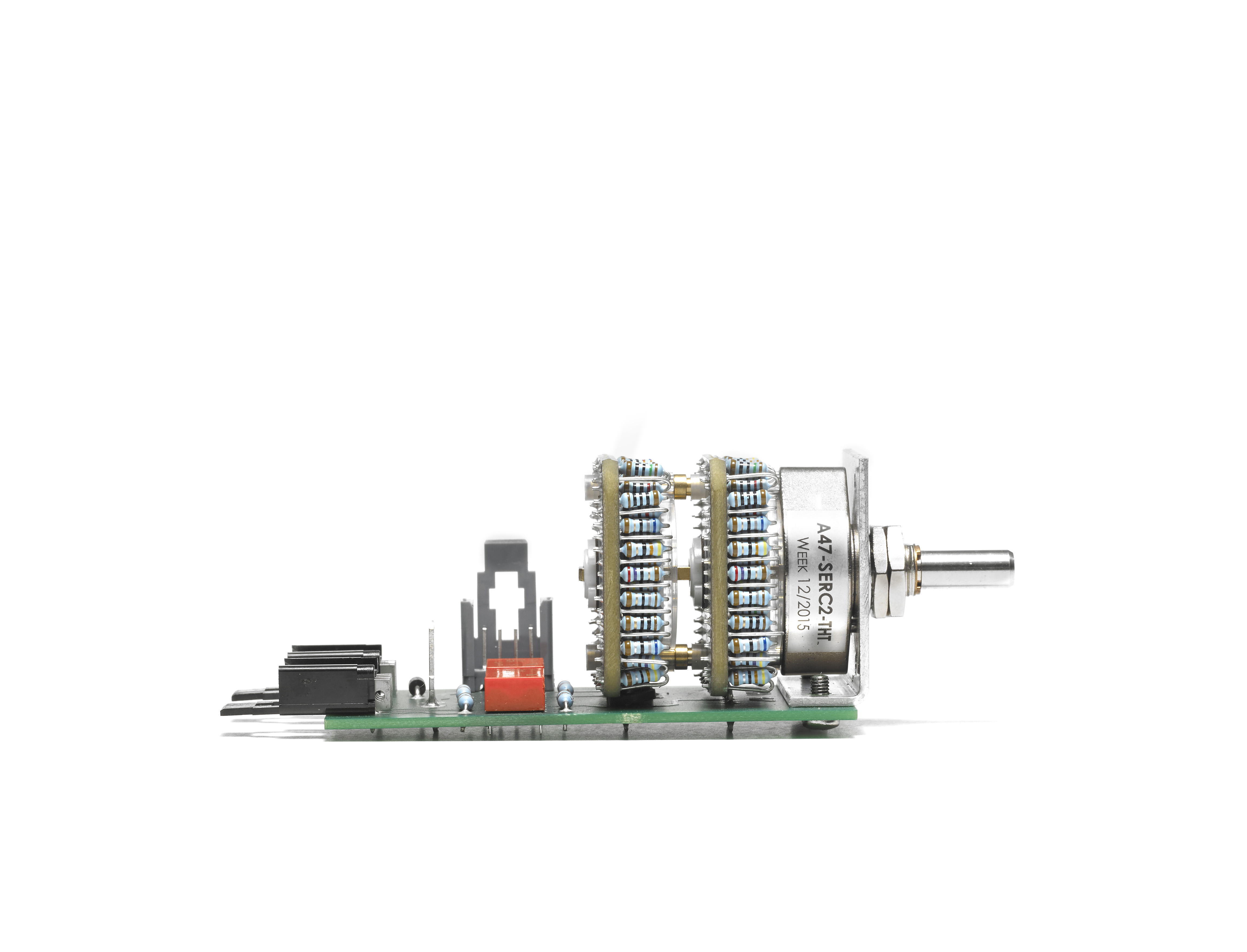Description
The volume control is an important part of a preamplifier. The requirements for the controller are very high. The control range must be at least 1:3000 (or 1:0.00033) to ensure a setting that is sensitive to human hearing.
At the same time, the channel deviation within this range should not be greater than 1 dB. The contact resistance should be constant during and after the adjustment to avoid control noise. In our strict selection, rotary controllers with a resistance track that is scanned by a wiper largely meet these requirements, but due to the spring-guided scanning of the resistance track, undesirable resonance effects can occur that influence the contact resistance and degrade the signal in the micro range. Due to the design, depending on the controller setting, there may also be a limitation in the frequency bandwidth, i.e. the speed.
An improvement in the controller principle can only be achieved with a tap changer. In this complex process, the resistance path is simulated by a series connection consisting of individual resistors. The tap changer now scans the connection points of the resistance chain. The advantages of this solution are obvious: Due to the tightly tolerated fixed resistors, the channel tolerance over the entire control range is now less than 0.1 dB. The hard gold-plated contacts of the switch have an extremely low contact resistance and therefore do not produce micro-fluctuations in the signal level caused by mechanical resonances.
The tap changer for Jubilee Preamp and HP 700 SE was developed in-house and is manufactured individually
The switch has 47 positions. This unusually high number of levels enables finely graded, reproducible volume adjustment.
In order to eliminate the influence of the controller or the controller position on the bandwidth, frequency compensation was added to the tap changer - like the balance controllers. Equipped with this unique circuit detail, the OCTAVE tap changer now behaves like an ideal controller. The tonal properties are constant over the entire control range, and the center location also remains stable over the entire range due to the negligible channel tolerance. The sound image gains spatial depth, the finest nuances become audible in the sound carpet.
However, due to the mechanical design of the switch, it is not possible to control the switch positions with the remote control.
